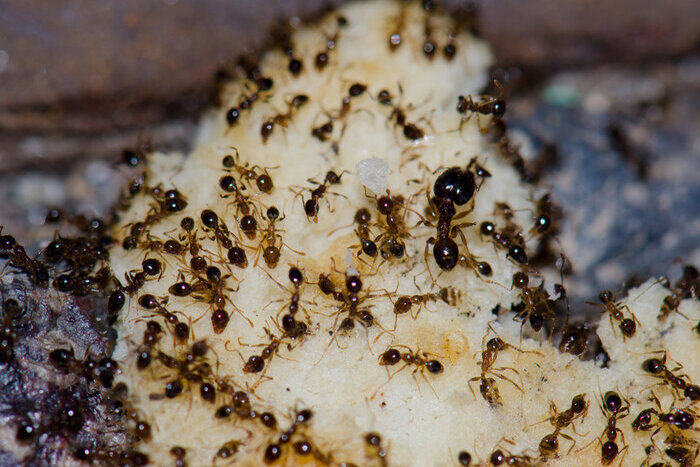
Along with the hordes of tourists and the Pacific coast breezes come the summer insects to the Bay Area. You can find these pests crawling up buildings, walking down the sidewalk, or marching around your kitchen.
These creepy crawlies live in your yard, gardens, up in your trees and inside your home. So, what can you do about California insects that could damage your foliage and the structure of your home?
Read more to find out which common insects live in the Bay Area. Once you know how to recognize these pests, you can decide how to get rid of them.
Ants invade your home during summer droughts looking for a cool habitat. This usually happens during August and September. Four of the most common Bay Area ants include:
These ants are a real problem for homeowners. They’re an aggressive species that don’t have natural enemies. They’ve wiped out many native ants and invade homes all the time.
Unlike other ants, Argentine ants have several queens so it’s hard to kill the colonies.
These large ants can be black, light brown, rust, of red and black. They love building nests in tunnels they carve into the damp wood of your home.
This causes structural damage to your house. They’re most active from late afternoon through the night.
As you can see from their name, these ants steal the food and larvae from other ant nests. They’re also called grease ants because they feast on grease, dead bugs and even dead rodents.
They’re tiny insects, which lets them get into your packaged foods. If you check behind your baseboards or in empty cabinet spaces, you might see their nests. They also live under rocks and in old wood.
If you ever squashed one of these ants, you know why they’re named odorous house ants. The odor they give off smells like rotten coconuts.
These tiny ants invade your home after heavy rains. They march in lines and if you disturb them, they release their odor.
It’s hard to get rid of them because they move their nests every few weeks. If they’re inside your house, they nest in your insulation, window frames and walls.
They love sweets, especially fruit juice, cakes, cookies and pastries.
The Bay Area has about 90 different bee species. The following list names the bees and wasps that torment you on summer days.
The most common bee is the Honey Bee. They prefer to nest in hollow tree trunks, but they will also nest in empty wall space.
They also mind their own business unless you bother them. Honeybees only sting as a last resort and won’t chase you. They can only sting once and then they die.
When you’re enjoying an outdoor picnic, yellow jackets might scare you off and start munching on your goodies. Most likely, your first thought is that they’re bees. But, yellow jackets are actually wasps.
In the spring, they eat insects so they can give protein to growing larvae from their colonies. As the summer progresses, they change their diet to include sugars.
This is why you see them around garbage cans and outdoor food sources, like your picnic. If you have a nest of yellow jackets in your yard, it can be a real problem.
One colony can have thousands of wasps that defend their nests aggressively. They’re quick to respond and will attack you and chase you for a long time. If they catch you, they can sting multiple times because their stinger is barbless.
Even sounds can trigger them to attack. For example, the vibration from a lawnmower or hedge clippers will make them attack you.
The San Francisco Bay Area is famous for its rainy winters. The problem is when it heats up in the summer, the annoying mosquitoes hatch and breed in leftover stagnant water. Sometimes, there are so many mosquitoes, it’s impossible to stay outside.
These mosquitoes are very active from May to November. They breed in rainwater that collects in your gutters, outdoor containers, puddles and any other water source. Some mosquitoes can breed in only a capful of water.
Thousands of mosquitoes can hatch in stagnant water. Once hatched, they travel up to two miles looking for a bloody feast. They’re attracted to body heat, body odor and breathing.
These nasty summer insects carry diseases from infected animals to humans. If you go out at dusk or at night, try to wear long sleeve shirts and long pants to protect yourself from bites and disease.
Even if you don’t have a pet, you can still have a flea infestation in your home. The heat of summer is the prime time for fleas to breed.
They can enter your home on rodents living in your attic or in your walls, such as rats, mice and squirrels.
Fleas carry diseases like Rocky Mountain spotted fever, Lyme disease, tapeworms and bacterial infections. They breed quickly, and their tough skin makes them hard to eliminate.
Many times, you won’t know fleas live in your house until you go away for a few days. When you come home, you open the door and all of a sudden, your legs are covered in fleas.
They breed in hot, closed up areas. When their eggs hatch, the tiny worms hide in your carpet fibers, couch cushions and mattresses. It can take up to four weeks for the pupae to hatch into a flea.
The Bay Area attracts many species of California insects from attractive butterflies and dragonflies to destructive household pests. Knowing how to recognize them can help you keep these common insects under control.
Contact us for more information on how to keep your home free from California pests.